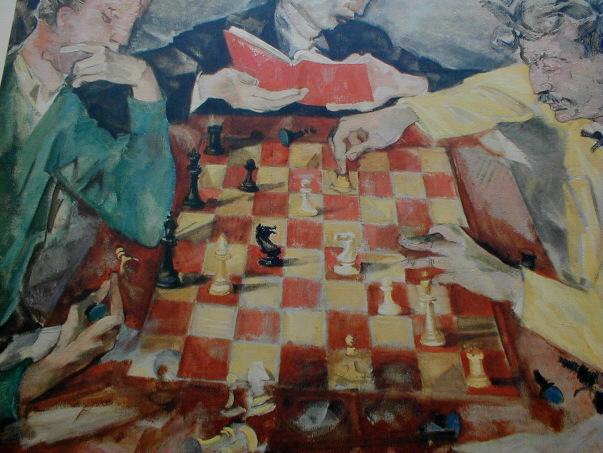Bronstein on chosing a move

Fom the first chapter of David Bronstein The Modern Chess Self-Tutor.
This Positional Strength of a position is something that many people do not understand and appreciate.,not only players of average strength , but even masters. How many games have been lost by attacks floundering on solid defenses! The problem is that on the board, as on a diagram, one sees only the outward aspect of the position -- the placing of the pieces-- and the interconnections between them are concealed from view, they are open only to our mind.
So,each time, when it is your turn to move, you are obliged to make a single choice out of many possibilities. In so doing you will rely on your basic information-your knowledge and experience. suitably systemised and in the current information- the position on the chess board and the series of preceding moves. You will be guided by your ideas,tastes,intuition, and of course, calculation a few moves ahead. But not too many moves ahead. Do not believe those who talk about calculating ten moves ahead. This applies only to strongly forced variations ,where to each move there is only one or two replies.,Branched variations do not usually lend themselves to direct calculation. One of the greatest chess thinkers, Richard Reti,to a questions as how far he calculates variations ahead replied :One move ahead. By this he expressed an idea which in modern terminology would be stated roughly as follows:
"The range of possibilities in chess is endless, the range of reality is unambiguous, and in such conditions the choice of a move cannot be based on the calculation alone"
In the majority of lengthy combination achieved by the author, the basis was not just calculation , but a belief in the logical strength of a position, in the readiness of resources and in their harmonious coordination. (TAKchess note take a look at move 14 by white, I imagine it made in this way http://www.chessgames.com/perl/chessgame?gid=1033895 )
The choice of a move is a comparison of resources and aims. You must ask each piece what it can usefully achieve on its own, what help it requires from the other pieces, and in what way it itself is prepared to help them. All this must be done as quickly as possible, in order to also use sensibly your time.
Now this guy is deep and somewhat rambling. I have been waiting for myself to reach a level where I can better appreciate his writing. I think that time is now.
http://www.exeterchessclub.org.uk/Books/selftutr.html
This Positional Strength of a position is something that many people do not understand and appreciate.,not only players of average strength , but even masters. How many games have been lost by attacks floundering on solid defenses! The problem is that on the board, as on a diagram, one sees only the outward aspect of the position -- the placing of the pieces-- and the interconnections between them are concealed from view, they are open only to our mind.
So,each time, when it is your turn to move, you are obliged to make a single choice out of many possibilities. In so doing you will rely on your basic information-your knowledge and experience. suitably systemised and in the current information- the position on the chess board and the series of preceding moves. You will be guided by your ideas,tastes,intuition, and of course, calculation a few moves ahead. But not too many moves ahead. Do not believe those who talk about calculating ten moves ahead. This applies only to strongly forced variations ,where to each move there is only one or two replies.,Branched variations do not usually lend themselves to direct calculation. One of the greatest chess thinkers, Richard Reti,to a questions as how far he calculates variations ahead replied :One move ahead. By this he expressed an idea which in modern terminology would be stated roughly as follows:
"The range of possibilities in chess is endless, the range of reality is unambiguous, and in such conditions the choice of a move cannot be based on the calculation alone"
In the majority of lengthy combination achieved by the author, the basis was not just calculation , but a belief in the logical strength of a position, in the readiness of resources and in their harmonious coordination. (TAKchess note take a look at move 14 by white, I imagine it made in this way http://www.chessgames.com/perl/chessgame?gid=1033895 )
The choice of a move is a comparison of resources and aims. You must ask each piece what it can usefully achieve on its own, what help it requires from the other pieces, and in what way it itself is prepared to help them. All this must be done as quickly as possible, in order to also use sensibly your time.
Now this guy is deep and somewhat rambling. I have been waiting for myself to reach a level where I can better appreciate his writing. I think that time is now.
http://www.exeterchessclub.org.uk/Books/selftutr.html


2 Comments:
At 5:03 PM, Temposchlucker said…
Temposchlucker said…
Looks like a KG to me:)
At 4:58 PM, Maid Service Fountainebleau said…
Maid Service Fountainebleau said…
Greatt read thanks
Post a Comment
<< Home